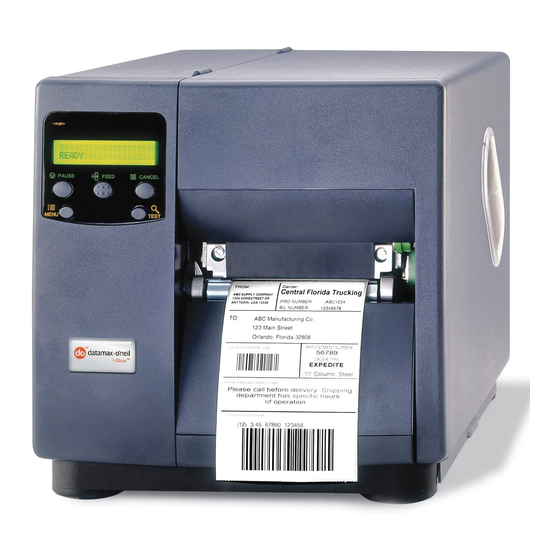- ページ 8
スキャナー Datamax I-ClassのPDF ユーザーマニュアルをオンラインで閲覧またはダウンロードできます。Datamax I-Class 15 ページ。 Present sensor option
Datamax I-Class にも: クイック・スタート・マニュアル (4 ページ), クイック・スタート・マニュアル (6 ページ)

Alignment
Avoiding Specular Reflection
The Scanner is factory-adjusted for optimum performance.
If, however, the label exit angle changes (due to, for
example, the addition of a peel mechanism or an external
rewinder), normally good bar codes may fail because of
excessive specular reflection. A high level of reflection can
"blind" the internal optics. The diagram (right) illustrates
the no read specular zone, between 0 to 10 degrees off
perpendicular.
The use of controls, adjustments, or the
specified herein may result in hazardous LED light exposure. Class 1 LED power up to 15
mW in a 0.1 ms pulse at 635-670 nm could be accessible in the interior.
CAUTION
To reduce specular reflection, follow the steps listed below:
1) Ensure that the Tear Bar, Peel Mechanism, or Rewind Plate has been mounted to the printer (if using
an external rewinder, attach the labels to the rewinder). See the I-Class Operator's Manual for
mounting details.
Note: The cutter option cannot be used when the Scanner is installed.
2) With four-inch wide label stock installed, use the printer's front panel and enter 'QUICK TEST
MODE.' Print a Print Quality Label, as shown below (see the I-Class Operator's Manual for details).
Picket Fence Bar Code
3) Unlock the Printhead Latch and raise the printhead assembly. Carefully position the Print Quality
Label so that it comes straight out of the printer, and so that only the bottom ¼ inch of the Picket
Fence Bar Code is showing from the Ribbon Shield (see drawing below). Lower the printhead
assembly and lock the Printhead Latch.
performance of procedures other than those
6
